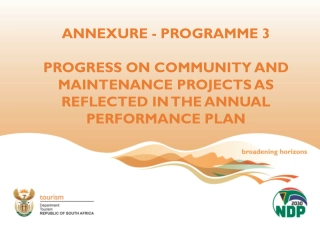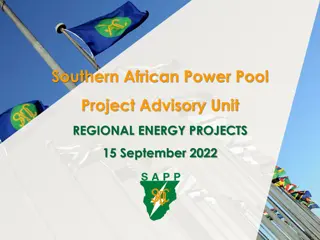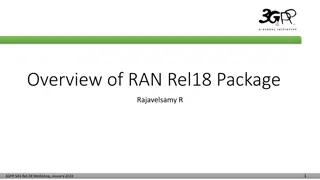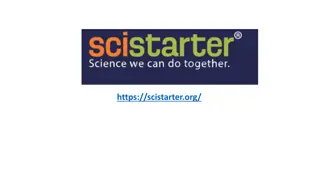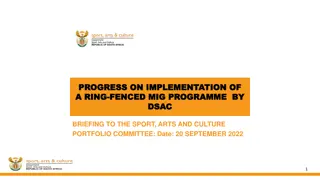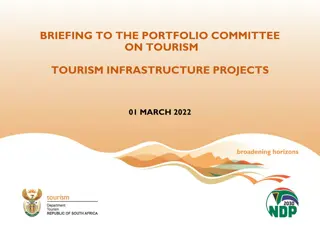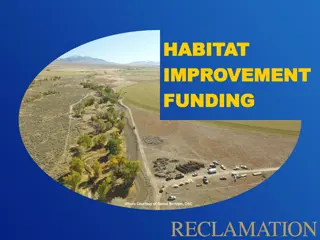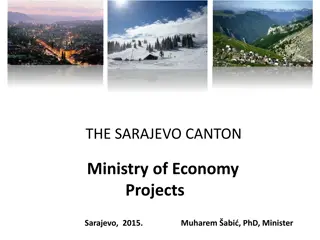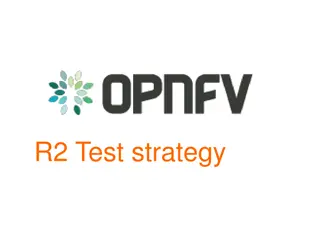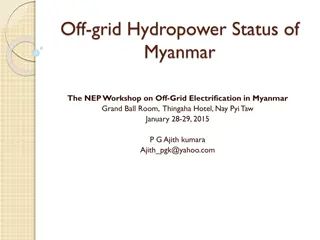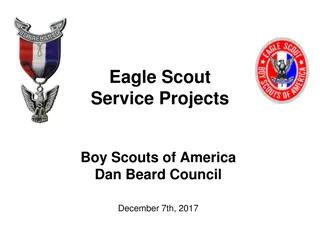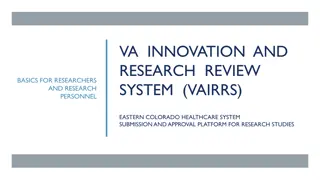
National Program for NASA Earth Observations Projects
"Explore the execution and performance metrics of the DEVELOP National Program, focusing on project characteristics, idea generation sources, project lifecycle, and the creation of deliverables for real-world environmental issues."
Uploaded on | 0 Views
Download Presentation

Please find below an Image/Link to download the presentation.
The content on the website is provided AS IS for your information and personal use only. It may not be sold, licensed, or shared on other websites without obtaining consent from the author. If you encounter any issues during the download, it is possible that the publisher has removed the file from their server.
You are allowed to download the files provided on this website for personal or commercial use, subject to the condition that they are used lawfully. All files are the property of their respective owners.
The content on the website is provided AS IS for your information and personal use only. It may not be sold, licensed, or shared on other websites without obtaining consent from the author.
E N D
Presentation Transcript
DEVELOP National Program DEVELOP Projects: Project Execution & Performance Metrics
Project Characteristics 70-80 projects take place each year - at their core they share these characteristics: Highlight the applications and capabilities of NASA Earth observations Address community concerns relating to decision-making for real-world environmental issues Partner with organizations who can benefit from using NASA Earth observations to enhance decision making by providing decision support tools Align with at least one of the eight NASA Applied Sciences Program s National Application Areas Research is conducted by teams with diverse backgrounds under the scientific guidance of Science Advisors and mentors from NASA and partner organizations Create a consistent set of deliverables
Where do Project Ideas Come From? National Science Objectives Environmental Decision Makers NASA Program Managers State & Local Policy Makers End-User Needs DEVELOP Center Leads & Participants DEVELOP Science Advisors Local NSF Communities & Tribal Entities Decadal Survey Ideas can come from anywhere as long as they connect to an end user! Have an idea? Tell your Center Lead Federal Agencies & Organizations New NASA Missions
Project Lifecycle Project Execution (10 weeks) Literature Review Data Acquisition, Processing & Analysis Results Conclusion Creation of Deliverables Project Idea Proposal Process Node drafts Proposal NPO Review NASA HQ Review Hand-off to Partners & Conference Presentations Submission to NPO NPO Reviews and Discusses with Nodes Conversations w/Potential Partners to Identify Needs
Deliverables All projects create: Project Summary Study Area Shapefile Poster Presentation Video & Transcript Tech Paper DEVELOPedia Page Website/Booklet Image Technical Image Feedback Form Some projects create: Code Software Release Forms (required if team desires to give partner any code, otherwise not applicable) Tutorial (optional) Brochure (optional)
Hand-Offs Hand-offs are an important step in transitioning results and methodologies to end users, and working towards the goal of the end user integrating NASA Earth observations in their decision making process. Commonly Used Hand-off Styles Email deliverables (tech paper, tutorials, presentation, etc.) Teleconference or videoconference presenting the results and methodologies In-person presentation of results and methodologies Get creative in how and what you hand-off. Interesting idea? Speak to your Center Lead about it! Depending on what you are handing off, be cognizant that you must get materials approved by NASA prior to handoff.
Project Assessment DEVELOP Project Strength Index (PSI) DEVELOP projects have consistently improved and matured over the Program s last 15+ years. The PSI provides DEVELOP a means of objectively evaluating projects and tracking progress in two steps. The PSI Part 1 is completed after each term of a project, creating a preliminary score. The PSI Part 2 is completed ~4-6 months after the final term of the project to assess additional project characteristics such as publishing, conference presentations, and partner use of end products. A series of questions are answered earning a total of 21 points in two sections: 1. Policy & Partner and 2. Platform & Science. The score for each category is then placed on the Index to receive the project s current stage (1 to 5). Stage 1: Basic Research Stage 2: Application Concept Complete Stage 3: Application Demonstration Successful Stage 4: Application Verified / End User Engaged Stage 5: Transition to End User / Decision Enhanced
Project Assessment Partner Inputs A Pre-Project Partner Form was sent out before the term to gather information about partner needs and expectations. A Post-Project Partner Form will follow the completion of the term to collect information regarding the perceptions of success of collaborating with DEVELOP. Were the project results and methodologies useful? Was the experience a good one? Is the partner using the results or methodologies in their decision-making process? Timeline: Center Leads sent out the Pre-Project survey link a couple weeks before the beginning of the term. The Post-Project survey link will be sent to partners at the end of the term. In case of a project that has multiple terms, the survey goes out following the project s final term. Please communicate to your partners that DEVELOP will stay in touch and send a brief survey at the end of the project s final term.
2018 Summer Project Portfolio Central America Agriculture & Food Security (NC) Intermountain West Health & Air Quality (LaRC) New England Agriculture & Food Security (GSFC) Richmond Health & Air Quality (LaRC) North Dakota & Georgia Agriculture & Food Security II(LaRC) New Orleans Urban Development (AL) Hindu-Kush Himalayan Disasters (MSFC) US Urban Development (LaRC) Kenai Peninsula Disasters (GSFC) Washoe County Urban Development (AZ) Southern California Coast Disasters (JPL) Chao Phraya Water Resources (MSFC) Puerto Rico Disasters (GA) Fremont River Basin Water Resources II (VA) Grand Canyon Water Resources (CO) Colombia Ecological Forecasting (LaRC) Idaho Water Resources (ID) Glen Canyon Ecological Forecasting (LaRC) Lake Michigan Water Resources (ARC) Honduras Ecological Forecasting (GA) Osa Peninsula Water Resources II (GA) Louisiana Ecological Forecasting (VA) Plum Island Water Resources II (MA) South Dakota Ecological Forecasting (NC) Southern California Water Resources II (JPL) US Virgin Islands Water Resources (ARC) New Mexico Energy (MSFC) Utah & Colorado Water Resources (CO) Check out the Summer Preview slides on DEVELOPedia!
Important Things to Note DEVELOP projects do not develop or prescribe policy. We simply demonstrate the feasibility of NASA Earth observations being integrated into decision making. Other agencies and organizations use the data and scientific results in their policy analysis and development. NASA funds DEVELOP, thus we highlight the use of NASA Earth observations (NOAA funds the NCEI location, so they have an additional directive to highlight NOAA CDRs).
THANK YOU! A lot goes into every DEVELOP project. What will your project s legacy be?

